


The Art Of Seed Selection
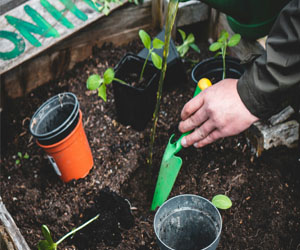
Gardening is a rewarding journey that begins with a single choice: selecting the right seeds. The success of your garden depends on the seeds you sow, making seed selection a critical and exciting step in the process. Whether you're a seasoned gardener or a beginner, understanding the nuances of choosing the right seeds is essential for cultivating a flourishing garden.
The Importance Of Seed Selection
Seed selection sets the stage for your entire gardening experience. The seeds you choose determine the types of plants you'll grow, their characteristics, and ultimately, the quality and quantity of your harvest. It's not just about picking any seed; it's about making informed choices to align with your garden's goals and your personal preferences.
Consider Your Garden's Goals
Before you dive into the world of seed catalogs, take a moment to consider the goals for your garden. Are you interested in growing vegetables, herbs, flowers, or a combination of these? Are you aiming for a bountiful harvest, stunning aesthetics, or both? Understanding your garden's purpose will help you make the right seed selections.
Open-Pollinated vs. Hybrid Seeds
One of the primary choices you'll encounter is between open-pollinated and hybrid seeds. Open-pollinated seeds are the result of natural pollination and breeding. They tend to be more stable and reproduce true to type, meaning that the offspring will resemble the parent plant.
On the other hand, hybrid seeds are the result of controlled cross-breeding between two different parent plants. They often exhibit desirable traits like disease resistance or improved yield. However, saving seeds from hybrid plants may not produce consistent results in the next generation.
Choosing Varieties
When selecting seeds, you'll have numerous varieties to choose from. Consider factors like:
Climate Suitability: Choose varieties that are well-suited to your local climate and growing conditions.
Growth Habit: Some plants have determinate growth (bushy and compact) while others have indeterminate growth (vining). Select according to your space and support availability.
Days To Maturity: Different varieties have varying maturity periods. Some mature quickly, while others take longer. Plan your garden timeline accordingly.
Disease Resistance: Look for varieties that are resistant to common pests and diseases in your area to reduce the need for chemical interventions.
Flavor And Appearance: Consider the taste and appearance of vegetables and fruits. After all, the end product should meet your culinary and aesthetic preferences.
Quality Matters
It's essential to purchase seeds from reputable sources. Well-established seed companies offer seeds that are more likely to be true to type, have high germination rates, and have been stored properly. When shopping for seeds, pay attention to the seed packets for information on planting depth, spacing, and care instructions.
Diversity And Experimentation
Don't be afraid to diversify your garden by trying new varieties each season. Experimenting with different plants can lead to exciting discoveries and keep your gardening experience fresh and engaging.
Seed selection is the gateway to a successful garden. The choice of seeds sets the stage for your gardening journey, and it's a decision that should be made thoughtfully. By considering your garden's goals, choosing the right types of seeds, and paying attention to the specific varieties that align with your preferences and local conditions, you're well on your way to nurturing a garden that will thrive and provide you with the satisfaction and rewards of homegrown produce and beautiful blooms.
From Neglect To Paradise
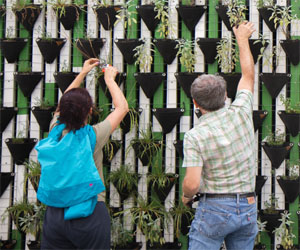 Assessment And Planning: The first step in any garden transformation is a thorough assessment of your space. Take a critical look at your garden, considering factors such as the current state of the plants, soil quality, layout, and potential issues like drainage problems. This assessment will help you identify the areas that need the most attention and guide your planning.
Assessment And Planning: The first step in any garden transformation is a thorough assessment of your space. Take a critical look at your garden, considering factors such as the current state of the plants, soil quality, layout, and potential issues like drainage problems. This assessment will help you identify the areas that need the most attention and guide your planning.
Clearing And Cleaning: For many neglected gardens, the first order of business is clearing away overgrown vegetation, weeds, and debris. This is the blank canvas upon which your transformation will unfold. Prune unruly branches, remove dead plants, and clear the ground to prepare it for new growth.
Soil Improvement: Healthy soil is the foundation of any successful garden. Assess your soil's condition and amend it as necessary. Adding organic matter like compost or well-rotted manure can improve soil structure and fertility, ensuring your plants have the nutrients they need to thrive.
Plant Selection: Choose plants that are well-suited to your local climate and growing conditions. Consider a mix of annuals, perennials, shrubs, and trees for a balanced and visually appealing garden. You can also incorporate native plants, which are adapted to the area and require less maintenance.
Garden Layout And Design: Carefully plan the layout of your garden. Consider elements like pathways, seating areas, and focal points. Create a design that not only enhances the beauty of your space but also ensures practicality and ease of maintenance.
Hardscape Elements: Incorporate hardscape elements like stone pathways, decorative walls, or patios to add structure and functionality to your garden. These features can create focal points and define different areas within the garden.


The Future Of Comfort And Efficiency
 Automation And Control
Automation And Control
A central component of smart living spaces is automation and control. Homeowners can remotely manage and monitor their living spaces using smartphones, tablets, or voice-activated virtual assistants like Amazon's Alexa or Google Assistant. This level of control allows for real-time adjustments and customization, enhancing the overall living experience.
Energy Efficiency
Smart living spaces are designed with a strong focus on energy efficiency. They incorporate advanced heating and cooling systems that can be programmed to operate only when needed, reducing energy waste. Smart thermostats learn user preferences and create schedules that optimize comfort while minimizing energy consumption. Lighting systems can adjust brightness based on natural light levels, further reducing energy usage.
Security And Safety
Security is a paramount concern in smart living spaces. These spaces feature advanced security systems equipped with surveillance cameras, motion sensors, and smart locks. Homeowners can monitor their properties in real-time, receive alerts about unusual activity, and control access remotely. This level of security enhances peace of mind.
Entertainment And Convenience
Entertainment and convenience are also central to smart living spaces. Smart televisions, sound systems, and streaming devices can be controlled with voice commands or through a centralized app, creating an immersive and user-friendly experience.
A Call To Action For A Sustainable Future
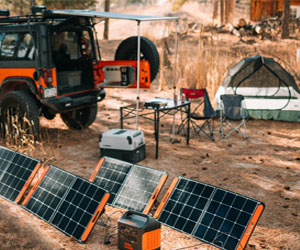 1. Climate Change: One of the most imminent environmental concerns is climate change, driven primarily by the increase in greenhouse gas emissions, such as carbon dioxide. This results in rising global temperatures, extreme weather events, and disruptions to ecosystems and human societies. Climate change is a global crisis that calls for rapid reductions in emissions and widespread adoption of clean energy sources like solar and wind power.
1. Climate Change: One of the most imminent environmental concerns is climate change, driven primarily by the increase in greenhouse gas emissions, such as carbon dioxide. This results in rising global temperatures, extreme weather events, and disruptions to ecosystems and human societies. Climate change is a global crisis that calls for rapid reductions in emissions and widespread adoption of clean energy sources like solar and wind power.
2. Deforestation: The rampant destruction of forests for agriculture, logging, and urban development poses a grave threat to the environment. Forests play a crucial role in carbon sequestration, biodiversity preservation, and climate regulation. Protecting and restoring these ecosystems is essential for our planet's health.
3. Pollution: Environmental pollution, including air, water, and soil pollution, is a significant concern. It adversely impacts human health, disrupts ecosystems, and damages wildlife. Initiatives to reduce pollution, stricter regulations, and sustainable practices are essential to mitigate these effects.
4. Biodiversity Loss: The loss of biodiversity due to habitat destruction, pollution, and invasive species is a significant concern. Biodiversity is essential for ecosystem stability, resilience, and human well-being. Conservation efforts and sustainable land management are crucial for addressing this issue.
5. Resource Depletion: The excessive consumption of natural resources, such as freshwater, minerals, and fossil fuels, is depleting the Earth's finite reserves. Transitioning to a more circular economy, where resources are recycled and reused, is a solution to this pressing problem.


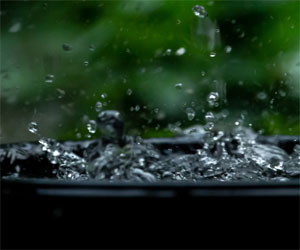
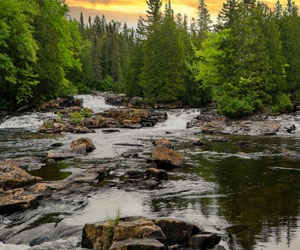
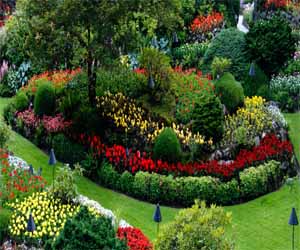

The Dawn Of Intelligent Living
 Smart Living At Its Best
Smart Living At Its Best
Future-ready homes are characterized by their integration of cutting-edge technology, automation, and intelligent systems. These homes use the power of the Internet of Things (IoT) to create an interconnected ecosystem, where devices and appliances can communicate and work together seamlessly. From lighting and climate control to security and entertainment, every aspect of daily life is optimized for convenience and efficiency.
Energy Efficiency And Sustainability
A central focus of future-ready homes is sustainability. These homes incorporate energy-efficient solutions that not only reduce utility costs but also minimize environmental impact. Solar panels, smart lighting, and advanced insulation systems are just a few examples. Future-ready homes can harvest and store energy, monitor usage, and make real-time adjustments to conserve resources.
Security And Peace Of Mind
Security is paramount in future-ready homes. Advanced surveillance systems with high-resolution cameras, motion detectors, and smart locks provide unparalleled protection for homeowners. These systems can be monitored and controlled remotely through smartphones, giving homeowners peace of mind and the ability to respond swiftly to any security concerns.
Customization And Personalization
Future-ready homes are designed to adapt to the needs and preferences of their inhabitants. For example, intelligent thermostats learn your temperature preferences and create customized schedules.
A Brighter, Greener Future
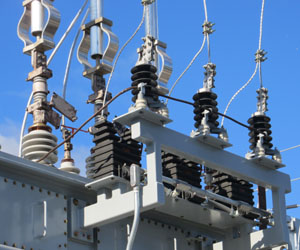 Energy efficiency plays a pivotal role in addressing several pressing global issues:
Energy efficiency plays a pivotal role in addressing several pressing global issues:
Environmental Sustainability: Increasing energy efficiency helps reduce greenhouse gas emissions, mitigating the effects of climate change. It allows us to meet our energy needs with a smaller ecological footprint.
Resource Conservation: Efficient energy use preserves finite natural resources like coal, oil, and natural gas. It reduces the need for extensive mining and drilling, minimizing the negative environmental impact of resource extraction.
Cost Savings: For individuals and businesses, energy efficiency translates to lower energy bills. By reducing waste and optimizing energy consumption, you can significantly cut your energy costs.
The Benefits Of Energy Efficiency
Lower Energy Bills: Improved energy efficiency translates directly into lower energy bills for households and reduced operational costs for businesses. This means more money in your pocket and increased competitiveness for companies.
Environmental Conservation: Reduced energy consumption leads to lower emissions of greenhouse gases, making a substantial contribution to environmental preservation and combating climate change.
Energy Independence: Energy efficiency, when combined with renewable energy sources like solar and wind power, can lead to greater energy independence. Less reliance on non-renewable resources means more stability and control over your energy supply.